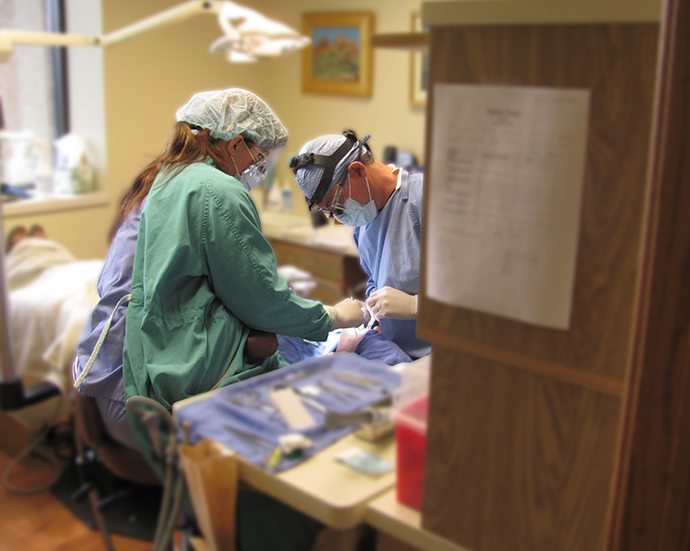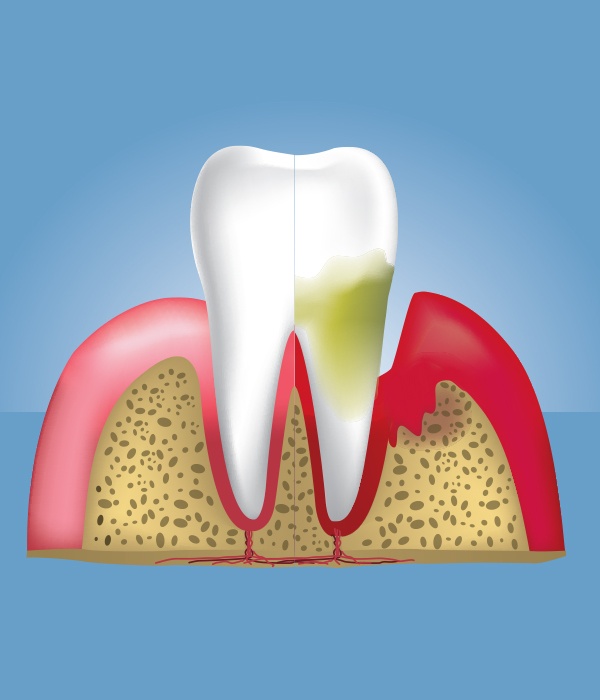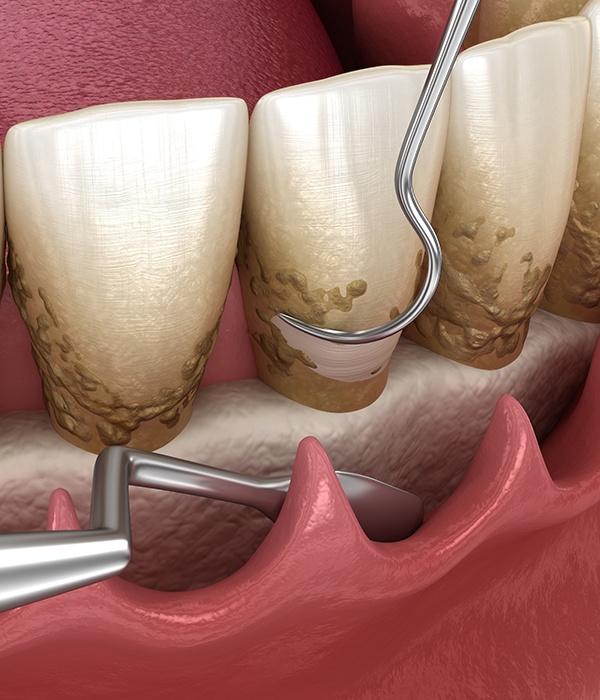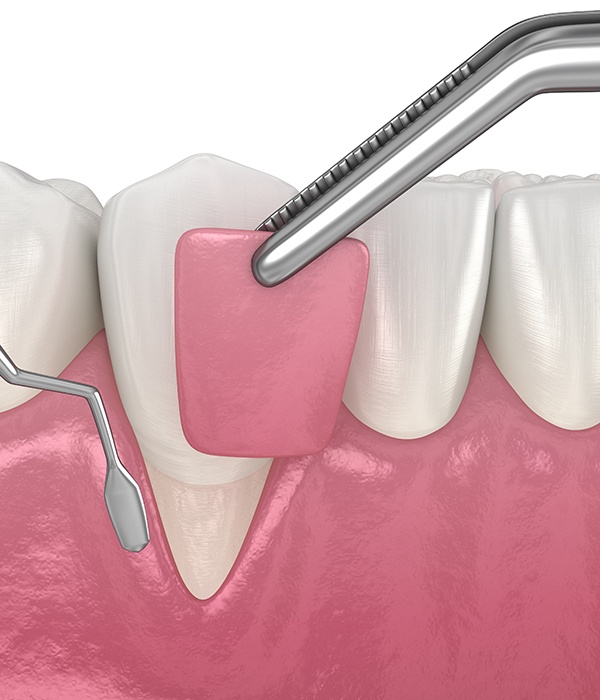
Surgical Periodontal Therapy – Colorado Springs, CO
Advanced Solutions for
Advanced Periodontal Problems

For patients in and around the Colorado Springs area who are suffering severe periodontal disease and damage, Rocky Mountain Periodontal Specialists may perform periodontal surgery. Depending on the needs of our patients, our experienced doctors may choose to do one or more restorative options, using surgical periodontal therapy in Colorado Springs, CO.
Why Choose Rocky Mountain Periodontal Specialists for Surgical Periodontal Therapy?
-
Three Skilled Periodontists
in One Location -
State-of-the-Art Technology
and Techniques -
Fully Personalized
Periodontal Treatments
Pocket Reductions

The longer gum disease goes untreated, the deeper the pockets that form around your teeth. Deep pockets give bacteria more room to grow, which leads to the breaking down of tissues and bone structures. With advanced gum disease, also called periodontitis, surgical treatment is usually the best option according to the American Academy of Periodontology. Pocket reduction involves our Colorado Springs periodontist folding back your gum tissue and removing the bacteria lodged at your tooth roots. He may also smooth the irregular surface of damaged bone to prevent further bacterial infections and to give the best chance of gum tissue reattachment. Once pocket reduction is completed, gums are secured back into place.
Learn More About Pocket Reductions
Regenerative Procedures

At our Colorado Springs periodontal office, our experienced periodontists can regenerate bone and tissue destroyed by severe periodontal disease. In a regenerative procedure, our doctors fold back the gum tissue, remove the bacteria, and perform the type of regeneration that best suits your needs. Regeneration includes using membranes, bone grafts, or tissue-stimulating proteins to encourage the natural regeneration of bone and tissue.
Crown Lengthening

When your teeth appear too short, it may be because too much gum covers your teeth. This is often called a “gummy smile.” At Rocky Mountain Periodontal Specialists, we can correct your gummy smile with a procedure known as crown lengthening. In this periodontal surgery, excess gum tissue is removed, and bone tissue is reshaped to give your smile a more pleasing, natural appearance.
Learn More About Crown Lengthening
Gum Grafting

Receding gums can expose your tooth root, making your tooth too long and increasing sensitivity to hot and cold foods. A gum graft often includes tissue from your palate or donated tissue, which is then used to cover your tooth root and even out your gum line. Gum grafts give your smile a more natural appearance and protect against sensitivity and bacterial infections.